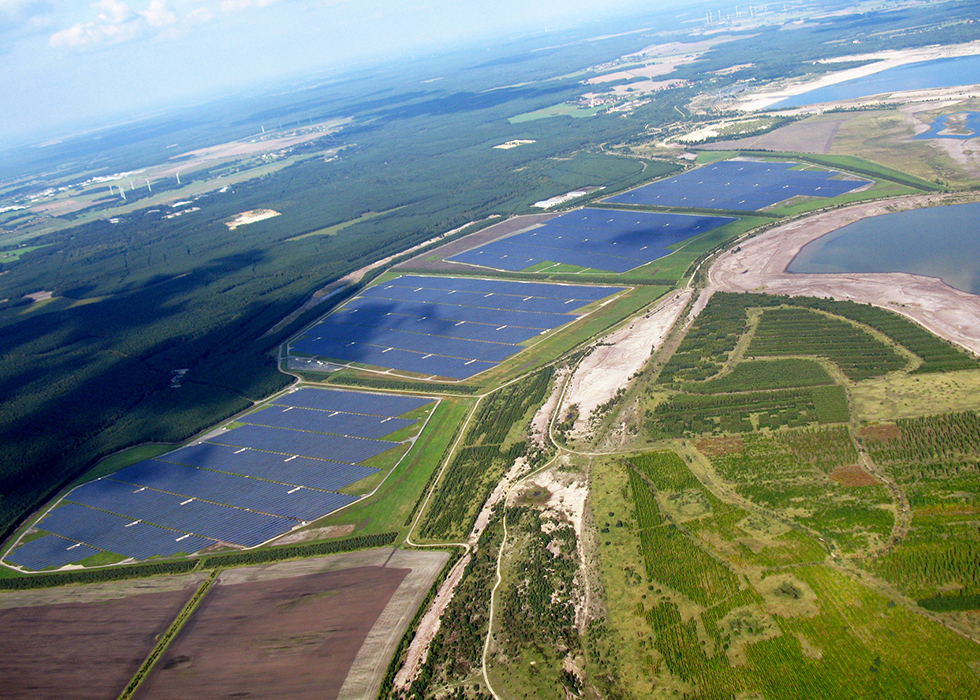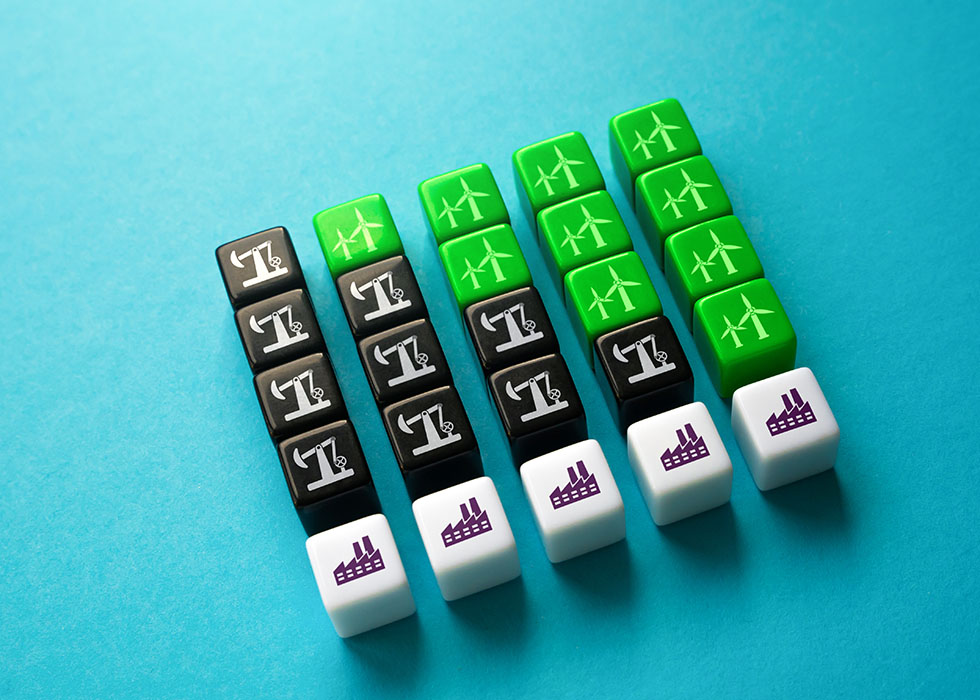A New Era of Energy Part 1: Understanding the Intricacies of the Energy Transition

Click here to read the second article in the series.
The world is no stranger to transition, especially when it comes to how we source and use energy. Since the rise of the Industrial Revolution, radical innovations in technology and science have paved the way for widespread development and a much higher standard of living. But at what cost? The long-term effects of industrialization continue to shape the world we live in. While many societal and technological gains have been made in the past two centuries, we are now experiencing critical environmental threats as a result of human activity. For example, four key climate change indicators — greenhouse gas concentrations, sea level rise, ocean heat, and ocean acidification — saw new record highs in 2021, underlining the need for sustainable change.
To mitigate these threats, a new energy transition is underway. While it’s true that energy transitions are not a new historical phenomenon, the urgent and complex nature of the current energy transition is unlike anything society has previously experienced, and therefore requires a multi-faceted plan of action. But what is renewable energy’s role in this shift? Knut Einar Rosendahl, a researcher and Professor of Economics at the School of Economics and Business at the Norwegian University of Life Sciences, argues that it will be the most crucial element in the transition to a lower-carbon society. Hanwha Newsroom recently interviewed Professor Rosendahl to take a closer look at the economic and technical intricacies surrounding this green energy transition, and gain a deeper understanding of what is needed to keep us on the path towards a decarbonized world for all.
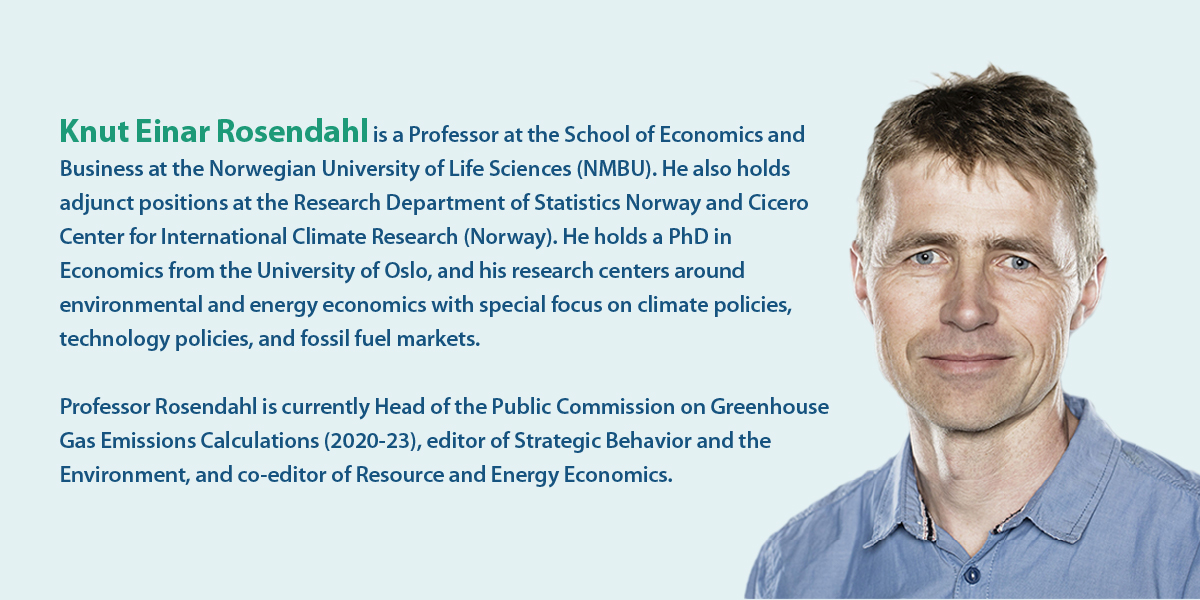
What is the energy transition and why is it important?
According to projections, global warming must stay below 1.5°C if we are to leave future generations with a healthy, thriving planet. Since global greenhouse gas emissions are the main contributor to rising global temperatures, we need to drastically reduce and offset these emissions to reduce global warming. In doing so, we can reach a net-zero emissions scenario where greenhouse gases are cut as close to zero as possible, with any remaining emissions re-absorbed or removed via carbon capture technology.
To achieve this goal, we have to start at the source. The energy sector is responsible for the largest portion of global greenhouse gas emissions, with over 40% of energy-related emissions generated by the burning of fossil fuels for electricity generation. Energy-related CO2 emissions set record highs in 2021, with an estimated 36.3 gigatons of greenhouse gases produced from energy combustion and industrial processes — a 6% increase from 2020 numbers. Since a large portion of emissions are caused by energy, the transition must place a sharp focus on this sector. Accordingly, the energy transition centers around embarking on a pathway to a net-zero emissions scenario by shifting from more traditional, carbon-intensive energy sources to renewables such as solar and wind energy that emit little to no greenhouse gases.
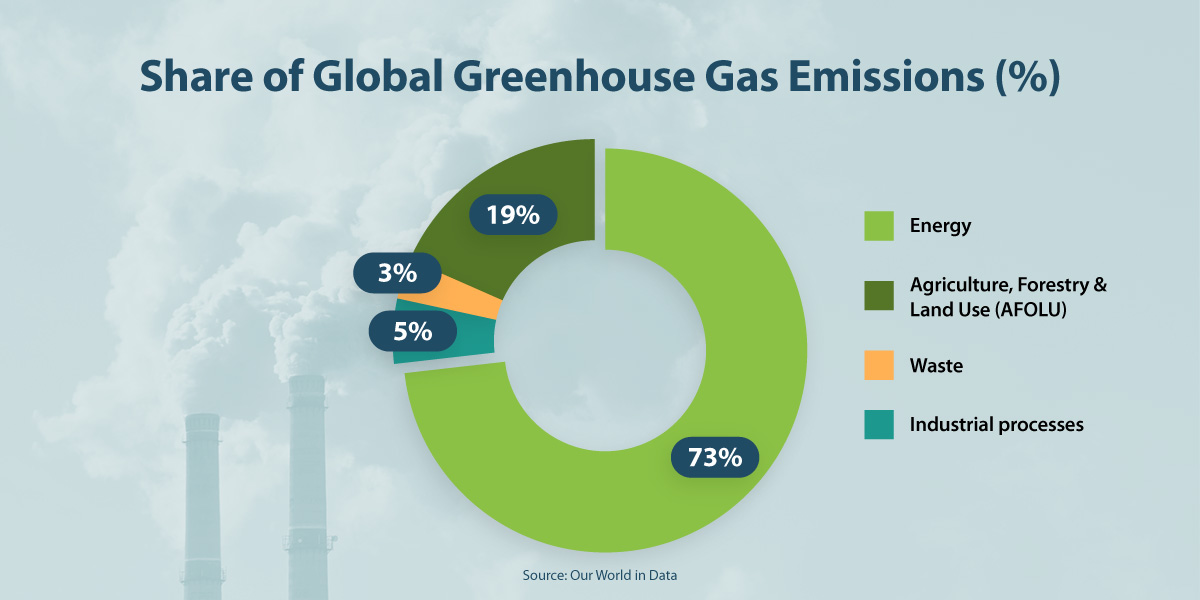
The benefits of a successful green energy transition go far beyond eliminating emissions. Green energy plays a vital role in strengthening energy security and expanding access to electricity in developing and hard-to-reach locations. It is also helping establish more prosperous communities by creating an influx of new job and career opportunities throughout the world. With these factors in mind, it is clear that the energy transition in progress is not only important to preserving planetary health, but a crucial component in equipping future generations with the tools and resources needed for a fulfilling life.
What are the challenges and barriers to the energy transition?
An energy transition of global proportions is no easy task, and there are several pressing challenges to overcome before we can see a complete shift. To start, many renewable energy sources are intermittent in nature, meaning certain conditions must be met before they can provide power. For example, a fuel-powered car requires gasoline, which is readily available. However, solar-powered batteries can only be charged if the sun is shining. Furthermore, supporting green energy infrastructure requires massive investments in power grids, in terms of both time and money. Building a new power grid is expensive and typically takes anywhere from 10-20 years to complete. This lengthy timeline further underscores the need to implement solutions now in order to account for the ample time required for a complete energy transition.
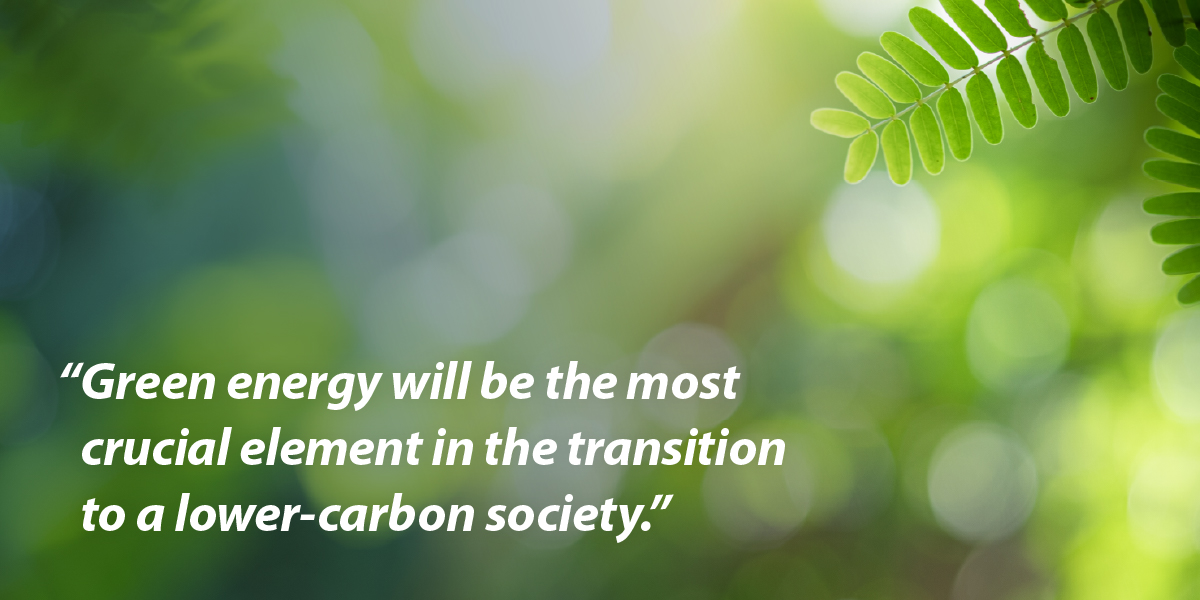
Numerous industries that rely on traditional energy sources may experience substantial effects on demand, production costs, and employment by making a sudden energy switch, adding another layer of complexity to the transition. “Some emissions are really hard to abate, such as some industrial processes and some transport segments (long distance ships, aviation, and possibly trucks),” Professor Rosendahl explained. As well as being energy-intensive, these sectors are often large-scale, multifaceted, and frequently reflect a direct link to infrastructure like harbors and railways. They operate in competitive international markets, making them a difficult target for climate policies. However, public and private sector climate action is growing throughout the world. An increasing number of political commitments to net-zero emissions goals aim to instigate voluntary initiatives that address sustainability while the private sector seeks to create innovative solutions to reduce its carbon footprint.
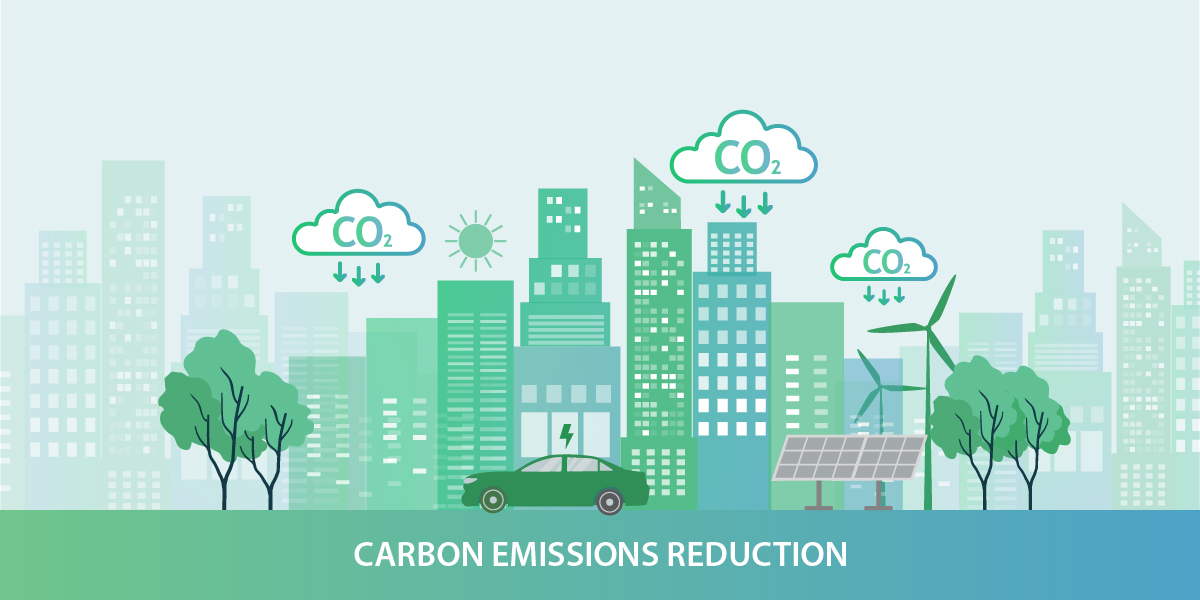
Policymakers and community buy-in will both play a major part in driving the energy transition forward. Furthermore, Professor Rosendahl notes that a country’s cultural and political environment can greatly impact the success of policy supporting green energy. “It is clear that the policymakers (in democracies, at least) need some public support in their policy interventions,” he stated. “It is thus important to not only consider what is regarded as the most effective policies, but also policies that are regarded as politically feasible.”
Another challenge lies in the widening divide between developed and developing countries around how the transition should proceed. This chasm reflects disagreements concerning policies, how they impact a country’s development, who is responsible for emissions, and who should finance the transition. When asked about these challenges, Professor Rosendahl replied, “I think both financing and grid capacity may involve obstacles. For low-income countries, I think it’s important that high-income countries help with financing of this transition.”
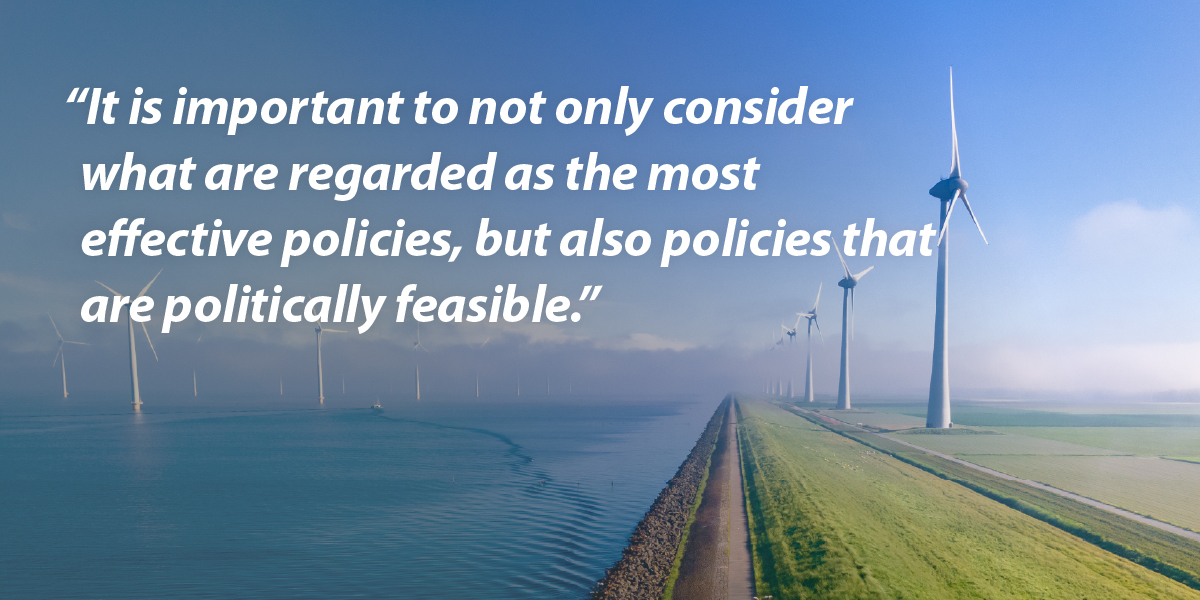
For developing countries though, the emphasis on reducing emissions must be balanced against other urgent priorities such as health, poverty, and economic growth. Many countries are simply unwilling to sacrifice near-term economic gains for the long-term benefits of implementing greener energy sources. However, Professor Rosendahl argues that green energy buy-in doesn’t necessitate sacrificing a large degree of growth potential. While he agrees it may involve higher initial costs, a gradual approach to lower-carbon fuel sources shouldn’t be very costly, especially with the falling costs of solar and wind energy. A green transition would also provide other advantages for these countries including good job creation, a cleaner environment, and improved health outcomes.
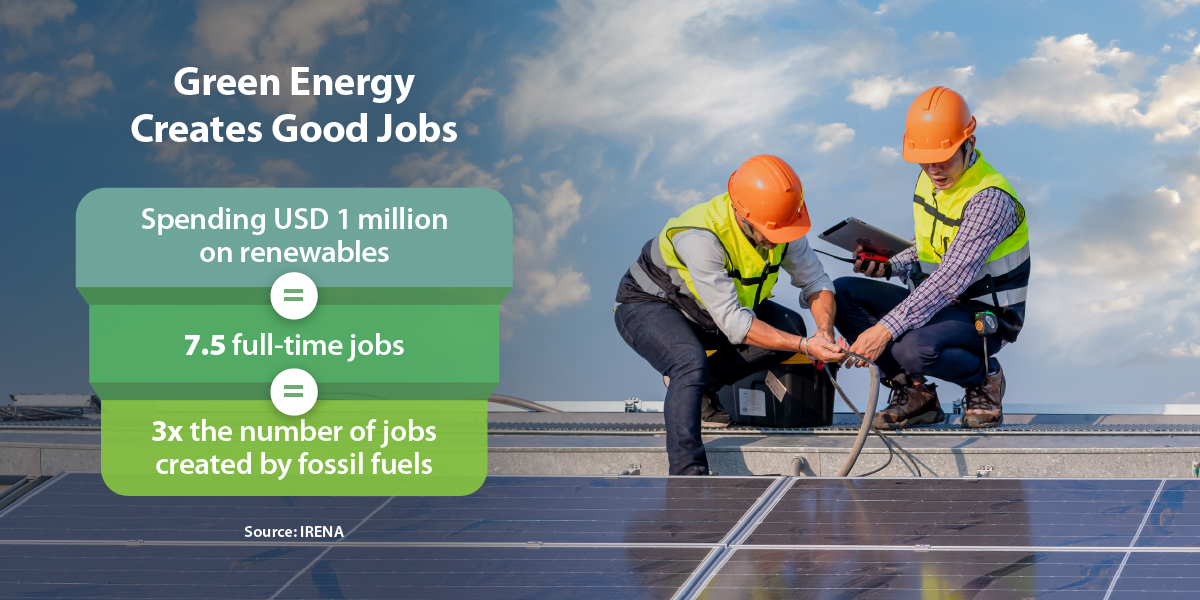
The current energy crisis, driven by recent geopolitical challenges, has posed another obstacle for the energy transition. After COVID-19 lockdowns were ended in 2021, the economic rebound that followed ignited global energy consumption. But energy markets have remained tight due to a plethora of supply and demand factors. The price of natural gas reached record highs in 2022 with electricity following suit in certain markets.
With the mounting market pressures, leaders have found themselves needing to prioritize between security, affordability, and sustainability, a problem known as the Energy Trilemma. Faced with the dual challenges of an ongoing global energy crisis and spiking inflation, many leaders have identified energy security as the main priority. But others argue that the choice between energy security and sustainability is a false one, and that a balance can be struck between all three dimensions. What is certain is that to truly achieve a decarbonized scenario, there must be a concerted, coordinated effort between policymakers and the private sector to push the energy transition forward.
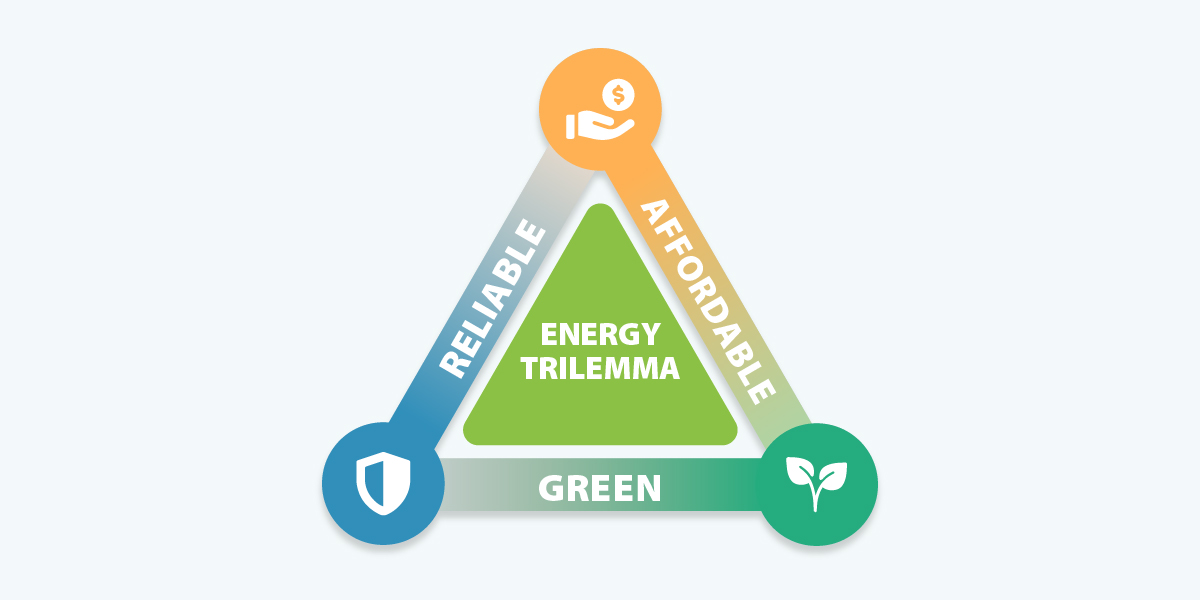
What is the status and outlook of the energy transition?
Currently, the status of the energy transition varies throughout the world. In Europe, Professor Rosendahl reports that “the green energy transition is moving forward quite rapidly.” However, the same cannot be said across the rest of the globe. Overall, reports including IRENA's World Energy Transitions Outlook 2023 show that current pledges and plans fall well short of the 1.5°C target, meaning that there is still much to be done to expand the energy transition’s reach if we are to meet our 2050 goals and mitigate the impacts of climate change.
Investing in green technologies could help move the needle in this regard. According to Professor Rosendahl, “Significant technological improvements for energy carriers such as hydrogen and batteries will be crucial in the transition to net zero, and also carbon capture and storage.” Investment in such technological improvements is scaling rapidly, with global investment across all energy transition technologies reaching a record high of 1.3 trillion USD in 2022. However, annual investment in creating additional green technology solutions must more than quadruple to keep the world on the 1.5°C pathway. The IRENA report states that “comprehensive policies are needed across all sectors to ramp up deployment, as well as to instigate the systemic and structural overhaul required to realize climate and development objectives.”
The shift from carbon-heavy energy to green energy is currently marked by a mix of challenges and victories. Despite a great deal of momentum in the transition, the current energy crisis is causing an uptick in coal consumption, particularly in middle income countries. Professor Rosendahl explains that this is due to a variety of factors including cost, the intermittency of solar and wind, financing, habit, and barriers for new technologies. He adds that too little emphasis on climate change and reducing emissions in-country could also be to blame.
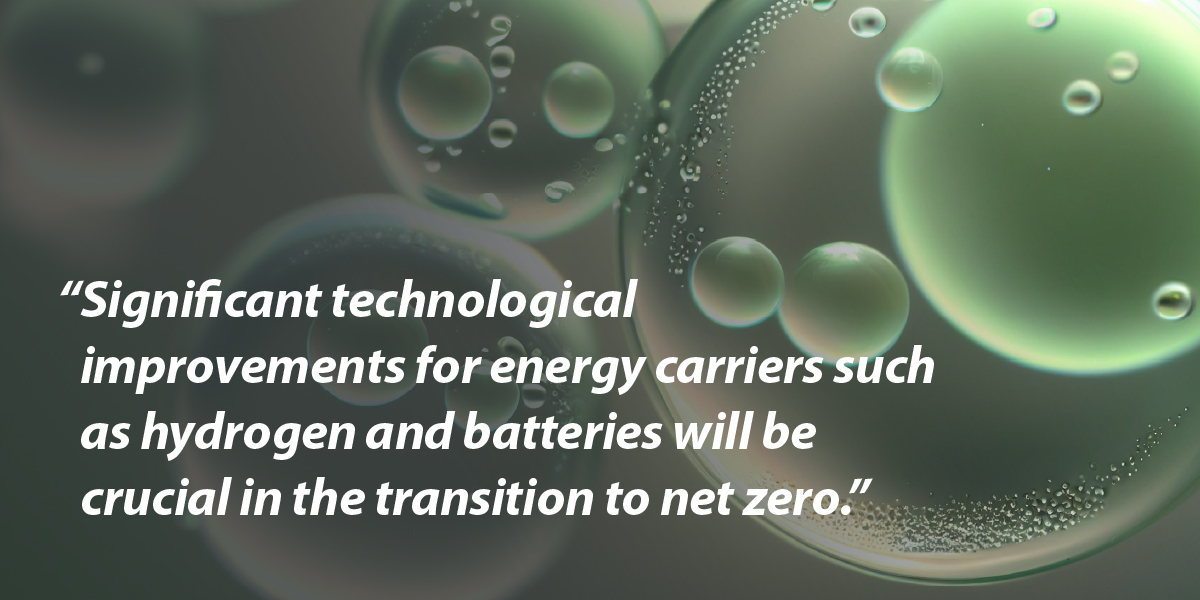
Coal use in Europe is expected to be a temporary trend whereas the market is set to remain robust in parts of Asia. This is an area that requires ongoing attention — especially as renewables will need to overtake coal by 2026 in order to reach net-zero emissions by 2050. Despite setbacks, the use of renewable energy is still increasing overall. Unusual weather patterns have created a stagnant environment for growing hydro and nuclear power, but the adoption of other renewable energy sources like solar and wind is soaring. Thanks to falling prices and supporting policy, solar and wind energy recently hit 12% of global power generation and are growing by around 15-20% per year (based on a 10-year average). In line with this, Professor Rosendahl emphasizes that it’s these cost reductions that will lead to a gradual energy transition throughout the world, though it might not be as fast as we would like given the climate crisis at hand.
Another silver lining in the energy transition is the increased commitments and support seen at a government level. Initiatives including Europe’s RePowerEU and President Biden’s Inflation Reduction Act (IRA) in the United States are accelerating the transition by incentivizing private sector investment and encouraging alterations in consumer behavior. Cross-border collaboration is also helping to speed up the transition, with developing economies like Indonesia and Vietnam securing commitments for international funding from the United Kingdom, U.S., and European Union to support displacing coal with renewables. Still, the changes currently underway in green energy represent just the tip of the transition iceberg. Governments, businesses, and individuals must all work together to create a new reality where sustainability takes center stage.
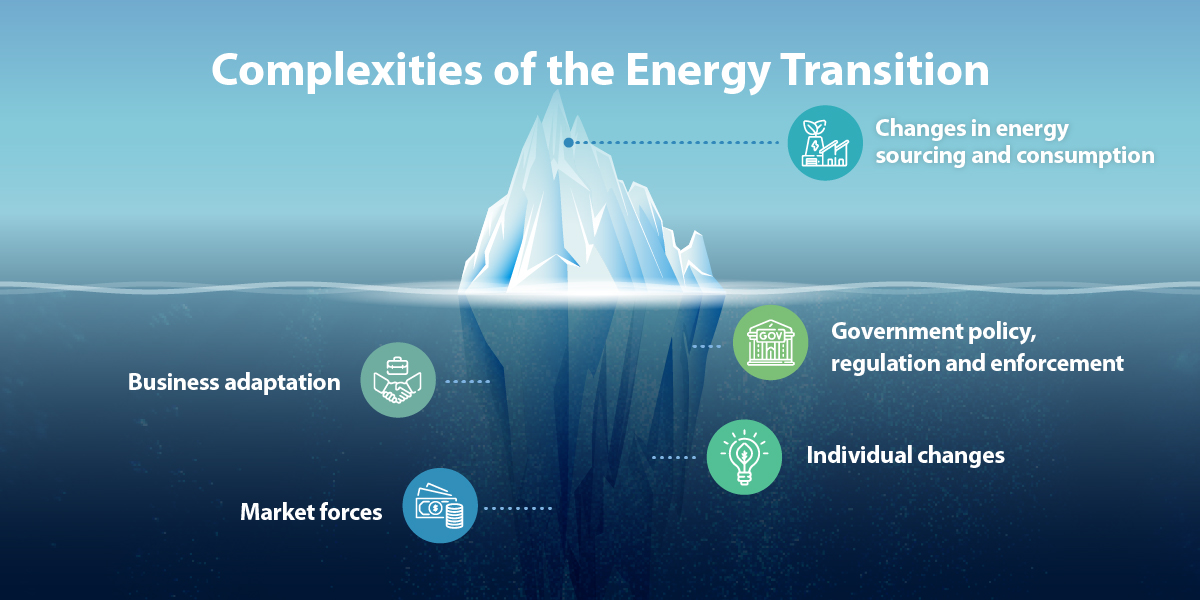
A Time for Transition
The energy transition is complex. We are still learning how to stop climate change, and there is no “one size fits all” solution or quick fix that will remove all barriers to a decarbonized society. The reality is every country is different. For instance, communities in Alaska, where they experience darkness for two months of the year, wouldn’t reap the same benefits from solar energy as those in sunny Egypt. Remote areas lacking transportation and energy infrastructure might struggle to access renewable energy solutions compared to places with a well-established grid. Therefore, progress requires a nuanced approach that accounts for each region’s unique culture, resources, strengths, and challenges.
For the energy transition to really work, we should aim to establish an optimal energy mix based on complementary sources and objectives instead of competing priorities. This unprecedented period of transition may be rife with obstacles, but the prosperity and peace-of-mind to be discovered on the other side will be well worth the journey.
Get the latest news about Hanwha, right in your inbox.
Fields marked with * are mandatory.
- Non-employee
- Employee


